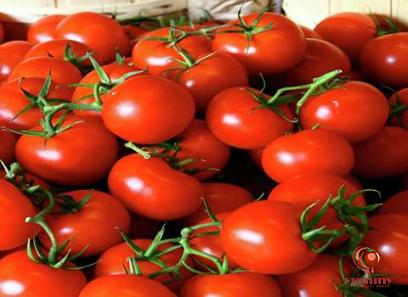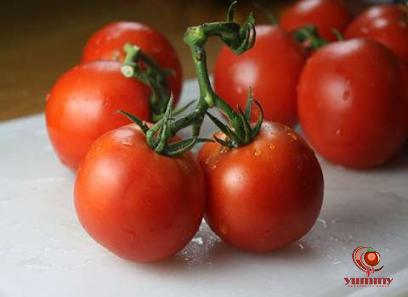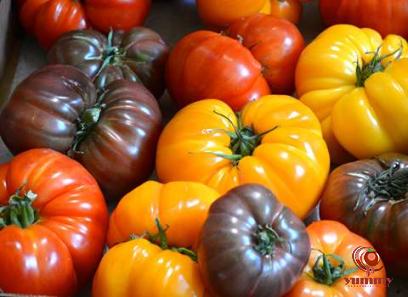Purchase and price of tomato paste in mexico types

Mexico is renowned for its rich culinary traditions, and one ingredient that plays a significant role in its vibrant cuisine is tomato paste. Whether it’s used as a base for salsas, stews, or marinades, tomato paste adds depth, flavor, and color to a wide variety of dishes. In this comprehensive guide, we will delve into the world of tomato paste in Mexico, exploring its history, production methods, popular uses, and cultural significance. A Brief History of Tomato Paste in Mexico: Tomatoes have been a staple in Mexican cuisine for centuries, with indigenous peoples like the Aztecs and Mayans cultivating and consuming this versatile fruit long before the arrival of the Spanish conquistadors. However, the use of tomato paste, a concentrated form of tomatoes, is a more recent addition to Mexican cooking. The production of tomato paste in Mexico began in the early 20th century when industrialized techniques for preserving and concentrating tomatoes were introduced.

.
 Initially, tomato paste was primarily used for export, but over time, it gained popularity in domestic kitchens as well. Today, Mexican tomato paste is a ubiquitous ingredient in both traditional and modern Mexican recipes. Production Methods of Tomato Paste in Mexico: The process of making tomato paste is relatively straightforward but requires precision and attention to detail. In Mexico, ripe tomatoes are first harvested from fields that benefit from the country’s rich soil and abundant sunlight. These tomatoes are then washed, sorted, and crushed to extract the juice and pulp. The extracted juice and pulp are then cooked down to reduce moisture content and concentrate the flavor. This reduction process can take several hours, during which the mixture is continuously stirred and monitored to prevent burning. Once the desired thickness is achieved, the tomato paste is strained to remove any remaining seeds or skin, resulting in a smooth and thick paste. Quality is paramount in the production of tomato paste in Mexico, with many manufacturers adhering to strict standards to ensure the final product is flavorful, vibrant in color, and free from additives or preservatives. Some producers even utilize organic farming practices and traditional cooking methods to preserve the authentic taste of Mexican tomatoes.
Initially, tomato paste was primarily used for export, but over time, it gained popularity in domestic kitchens as well. Today, Mexican tomato paste is a ubiquitous ingredient in both traditional and modern Mexican recipes. Production Methods of Tomato Paste in Mexico: The process of making tomato paste is relatively straightforward but requires precision and attention to detail. In Mexico, ripe tomatoes are first harvested from fields that benefit from the country’s rich soil and abundant sunlight. These tomatoes are then washed, sorted, and crushed to extract the juice and pulp. The extracted juice and pulp are then cooked down to reduce moisture content and concentrate the flavor. This reduction process can take several hours, during which the mixture is continuously stirred and monitored to prevent burning. Once the desired thickness is achieved, the tomato paste is strained to remove any remaining seeds or skin, resulting in a smooth and thick paste. Quality is paramount in the production of tomato paste in Mexico, with many manufacturers adhering to strict standards to ensure the final product is flavorful, vibrant in color, and free from additives or preservatives. Some producers even utilize organic farming practices and traditional cooking methods to preserve the authentic taste of Mexican tomatoes.
..
 Popular Uses of Tomato Paste in Mexican Cuisine: Tomato paste is a versatile ingredient that finds its way into a myriad of Mexican dishes, adding complexity and depth to both traditional and contemporary recipes. One of the most iconic uses of tomato paste in Mexican cuisine is in the preparation of salsa, a flavorful and spicy condiment that accompanies tacos, tamales, and other dishes. In addition to salsa, tomato paste is a key component in Mexican stews and soups, such as pozole and menudo, where it helps create a rich and hearty broth. It is also used in marinades for meats and vegetables, imparting a tangy and robust flavor to grilled or roasted dishes. Additionally, tomato paste can be mixed with herbs and spices to create adobo sauces, which are essential for seasoning meats and seafood in Mexican cooking. Cultural Significance of Tomato Paste in Mexico: Beyond its culinary applications, tomato paste holds cultural significance in Mexico, reflecting the fusion of indigenous and European influences that define Mexican cuisine. Tomatoes, the primary ingredient in tomato paste, were introduced to Mexico by the Spanish during the colonial era and quickly became integrated into local culinary traditions. Today, tomato paste serves as a bridge between past and present, connecting generations of Mexican cooks through shared recipes and techniques. Its vibrant color and bold flavor symbolize the diversity and complexity of Mexican cuisine, which draws inspiration from a myriad of cultural influences, including indigenous, Spanish, and African. In Mexican households, the preparation of tomato paste-based dishes is a time-honored ritual that brings families together around the dinner table. Whether it’s a simple salsa fresca or a complex mole sauce, the use of tomato paste in Mexican cooking is a testament to the country’s rich culinary heritage and continued innovation in the kitchen.
Popular Uses of Tomato Paste in Mexican Cuisine: Tomato paste is a versatile ingredient that finds its way into a myriad of Mexican dishes, adding complexity and depth to both traditional and contemporary recipes. One of the most iconic uses of tomato paste in Mexican cuisine is in the preparation of salsa, a flavorful and spicy condiment that accompanies tacos, tamales, and other dishes. In addition to salsa, tomato paste is a key component in Mexican stews and soups, such as pozole and menudo, where it helps create a rich and hearty broth. It is also used in marinades for meats and vegetables, imparting a tangy and robust flavor to grilled or roasted dishes. Additionally, tomato paste can be mixed with herbs and spices to create adobo sauces, which are essential for seasoning meats and seafood in Mexican cooking. Cultural Significance of Tomato Paste in Mexico: Beyond its culinary applications, tomato paste holds cultural significance in Mexico, reflecting the fusion of indigenous and European influences that define Mexican cuisine. Tomatoes, the primary ingredient in tomato paste, were introduced to Mexico by the Spanish during the colonial era and quickly became integrated into local culinary traditions. Today, tomato paste serves as a bridge between past and present, connecting generations of Mexican cooks through shared recipes and techniques. Its vibrant color and bold flavor symbolize the diversity and complexity of Mexican cuisine, which draws inspiration from a myriad of cultural influences, including indigenous, Spanish, and African. In Mexican households, the preparation of tomato paste-based dishes is a time-honored ritual that brings families together around the dinner table. Whether it’s a simple salsa fresca or a complex mole sauce, the use of tomato paste in Mexican cooking is a testament to the country’s rich culinary heritage and continued innovation in the kitchen.
…
 Conclusion: Tomato paste is a cornerstone of Mexican cuisine, adding depth, flavor, and color to a wide range of dishes. From traditional salsas and stews to modern marinades and sauces, tomato paste plays a vital role in creating the vibrant and diverse flavors that define Mexican cooking. As we have explored in this comprehensive guide, the production, uses, and cultural significance of tomato paste in Mexico are deeply rooted in the country’s culinary history and traditions. Whether you’re a seasoned chef or a home cook looking to explore new flavors, incorporating Mexican tomato paste into your recipes will undoubtedly elevate your dishes and transport your taste buds to the colorful streets of Mexico. Key Points to Highlight in SEO-Optimized Text: 1. **Rich History**: Discuss the historical roots of tomato paste in Mexican cuisine, emphasizing its evolution from traditional tomato cultivation to industrialized paste production. 2. **Production Methods**: Detail the step-by-step process of making tomato paste in Mexico, highlighting the quality standards and traditional techniques used by producers. 3. **Popular Uses**: Explore the versatile uses of tomato paste in Mexican dishes, such as salsas, stews, marinades, and adobo sauces, showcasing its ability to enhance flavors and textures. 4. **Cultural Significance**: Explain the cultural importance of tomato paste in Mexican culinary traditions, emphasizing its role in preserving heritage and fostering shared culinary experiences. 5. **Health Benefits**: Touch upon the nutritional value of tomato paste, including its high content of lycopene, vitamins, and antioxidants, and its role in promoting overall well-being. 6. **Sustainability**: Discuss the sustainability practices employed by some Mexican tomato paste producers, showcasing their commitment to environmental conservation and ethical farming methods.
Conclusion: Tomato paste is a cornerstone of Mexican cuisine, adding depth, flavor, and color to a wide range of dishes. From traditional salsas and stews to modern marinades and sauces, tomato paste plays a vital role in creating the vibrant and diverse flavors that define Mexican cooking. As we have explored in this comprehensive guide, the production, uses, and cultural significance of tomato paste in Mexico are deeply rooted in the country’s culinary history and traditions. Whether you’re a seasoned chef or a home cook looking to explore new flavors, incorporating Mexican tomato paste into your recipes will undoubtedly elevate your dishes and transport your taste buds to the colorful streets of Mexico. Key Points to Highlight in SEO-Optimized Text: 1. **Rich History**: Discuss the historical roots of tomato paste in Mexican cuisine, emphasizing its evolution from traditional tomato cultivation to industrialized paste production. 2. **Production Methods**: Detail the step-by-step process of making tomato paste in Mexico, highlighting the quality standards and traditional techniques used by producers. 3. **Popular Uses**: Explore the versatile uses of tomato paste in Mexican dishes, such as salsas, stews, marinades, and adobo sauces, showcasing its ability to enhance flavors and textures. 4. **Cultural Significance**: Explain the cultural importance of tomato paste in Mexican culinary traditions, emphasizing its role in preserving heritage and fostering shared culinary experiences. 5. **Health Benefits**: Touch upon the nutritional value of tomato paste, including its high content of lycopene, vitamins, and antioxidants, and its role in promoting overall well-being. 6. **Sustainability**: Discuss the sustainability practices employed by some Mexican tomato paste producers, showcasing their commitment to environmental conservation and ethical farming methods.


 Phone number:
Phone number:  WhatsApp Response:
WhatsApp Response:











